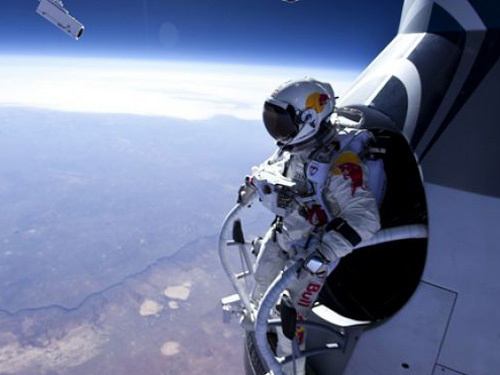Felix Baumgartner Supersonic skydive: Everything you need to know
Felix Baumgartner will be jumping out of a balloon 120,000ft in the air in a bid to travel faster than the sound barrier and become the world's highest skydiver

Because jumping off skyscrapers isn’t enough of a challenge for BASE jumper Felix Baumgartner, the thrill-seeking Austrian will be jumping out of a balloon at a record breaking height with a view to breaking the sound barrier – a feat that has never been achieved unaided. Sounds simple enough, but what can go wrong?
How high is the jump?
The balloon will take Baumgartner to a height of more than 120,000 ft. That’s 36.5km for you Metric-lovers or the equivalent of just over 80 Empire State Buildings stacked on top of each other.
How does he get that high in the sky?
The specially-made helium balloon atop a special pressurised capsule will haul the Austrian up to the height, which will take around two-and-a-half hours. Helium is used because as the balloon gains altitude, the air pressure decreases, which will cause the helium gas inside to expand, inflating the balloon to its maximum.
Can he breathe up there?
Nope, not at that height. Air pressure is less than 2 per cent of what you get at sea level, which means Baumgartner needs an oxygen supply to stay alive during the ascent.
How fast will he go?
That two-and-a-half hour ascent becomes a ten minute drop. Baumgartner will accelerate beyond 690mph (1,110km/h) within just 40 seconds. The speed of sound is 768mph (1,236km/h) – that’s a mile travelled every five seconds if he can make it up to that speed.
What are some of the other dangers, besides hitting the ground?
Medical director Jon Clark says there are three main dangers: low pressure, low temperature and acceleration. It could get as cold as -68 degrees Celsius up there, which is partly why Baumgartner needs to wear a suit and helmet known as a Pilot Protective Assembly. Oh and his blood could boil up there with that low pressure, which is why the suit is pressurised to 3.5 psi. But it’s the breaking of the sound barrier that is impossible to predict. The Dr says the closest thing to it would be a blast wave from an explosion.
Hasn’t the human body been that fast before?
We would be lying if we said no – when pilots eject out of supersonic flight or a plane breaks up the sound barrier is beaten, for instance. But there’s no real data on what happens when a body accelerates to supersonic and then back to subsonic speeds. One concern is that shockwaves will send Baumgartner into a spin he can’t control, and that would be very bad news.
How will we know the jump is going well?
We won’t – there will be a 20 second delay to avoid the issue of displaying Baumgartner hitting the earth and squishing on the floor – but Dr Jon Clark will be monitoring all vital signs as the jump goes on. Speed will be tracked via GPS. Not that anyone can do much to help if the you-know-what hits the fan, as the BASE jumper aptly explains: “If something goes wrong, the only thing that might help you is God.”
Will we see and hear the sonic boom?
That’s the plan. A microphone and various HD cameras about Baumgartner’s person will be transmitting the sound to us earthlings below in all of its eardrum-imploding glory. Good-old technology.
Where will Baumgartner land?
The jump is above Roswell, New Mexico, so hopefully he will land somewhere there. Area 51, perhaps?
What’s the world record to beat?
Joe Kittinger, an ex US Air Force Colonel, jumped from a balloon at an altitude of 102,800ft (31.3km) in August of 1960, making it the highest skydive of all time.
Can I watch it?
You can indeed. But as we said earlier, there will be a delay in the video feed just in case something goes wrong. Nobody wants the world record to become a public display of death, which is understandable. Check out the video below.
You may also like
Icon – Lyonheart K convertible
Android getting native Facebook app very soon?
Angry Birds Star Wars is almost here



